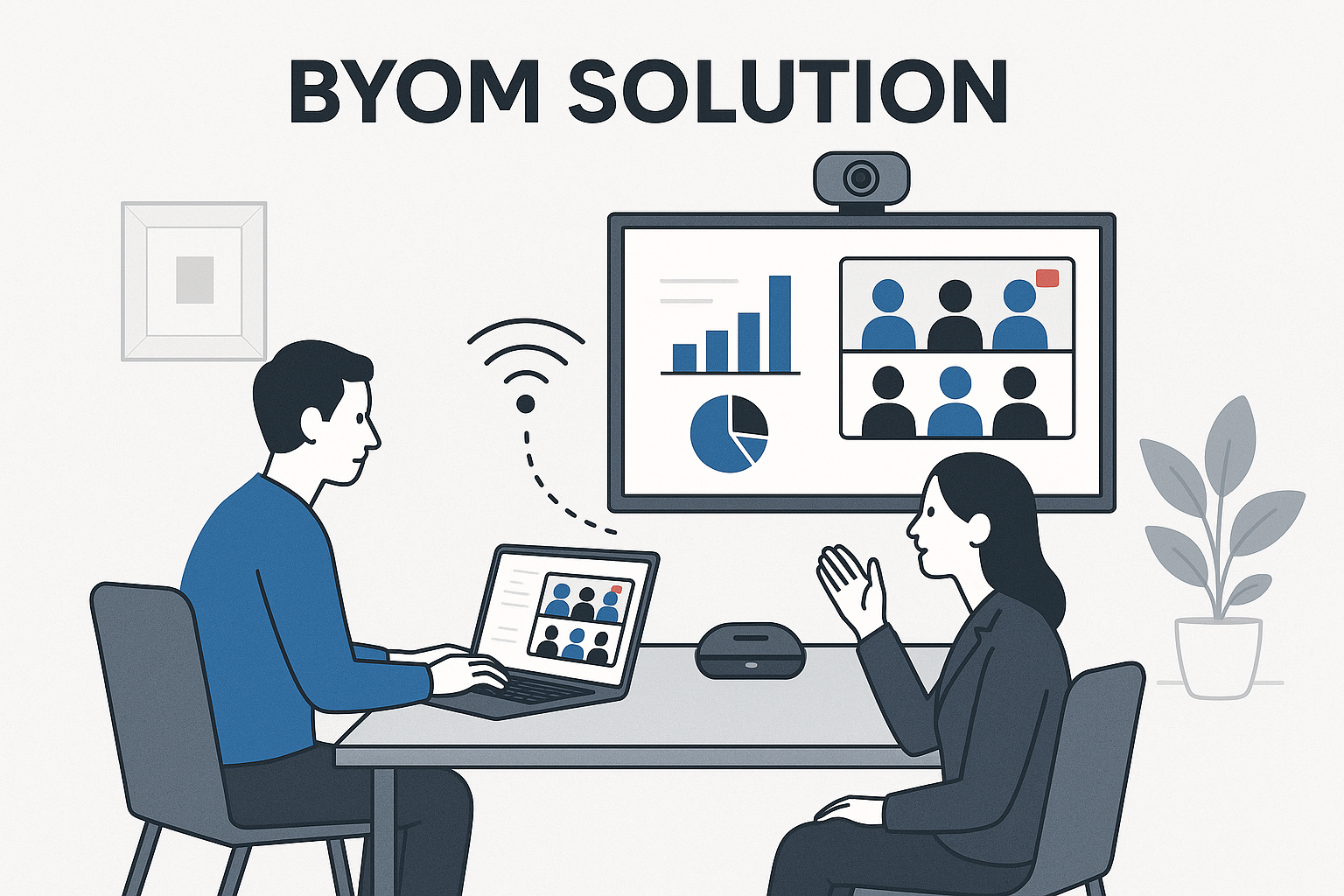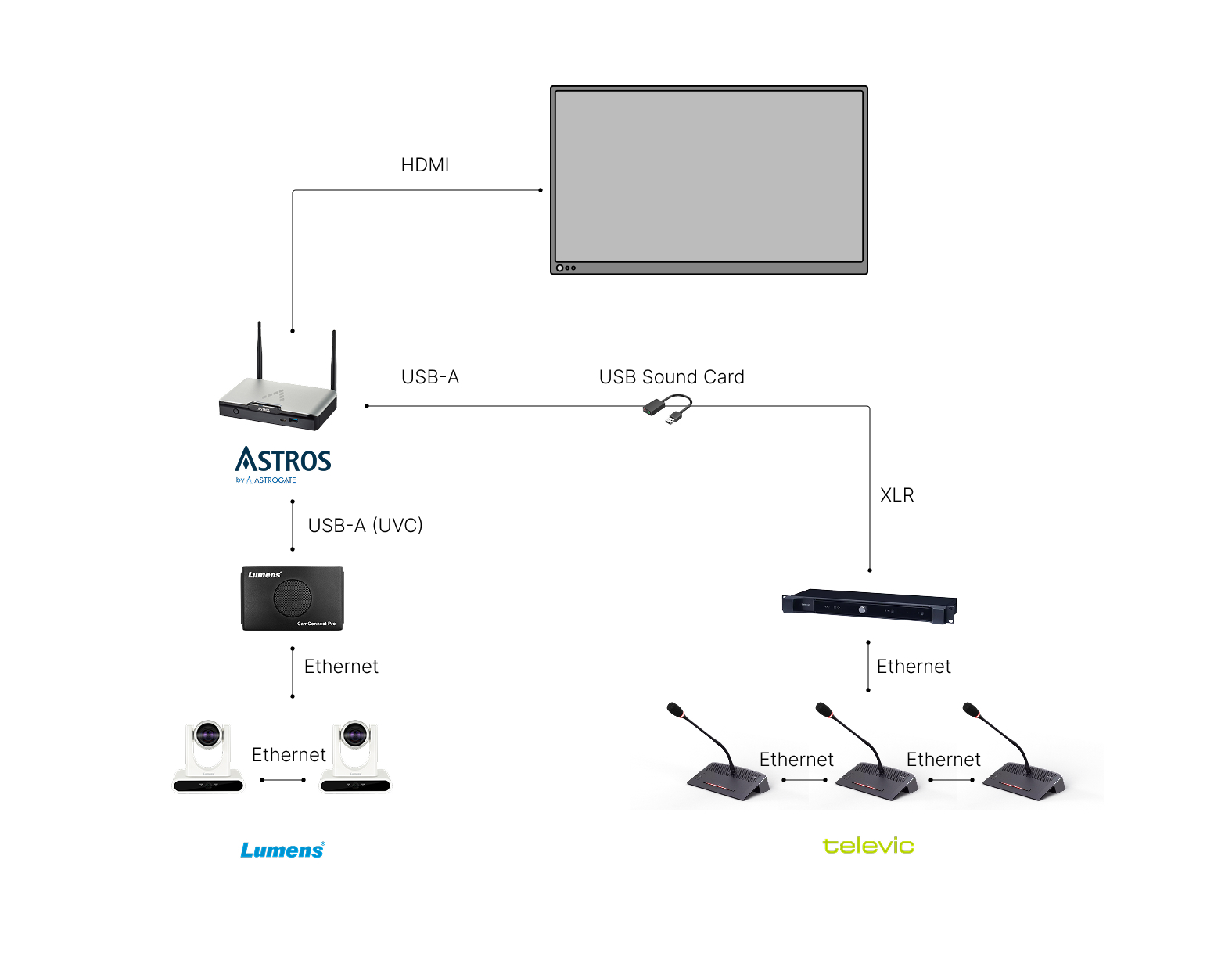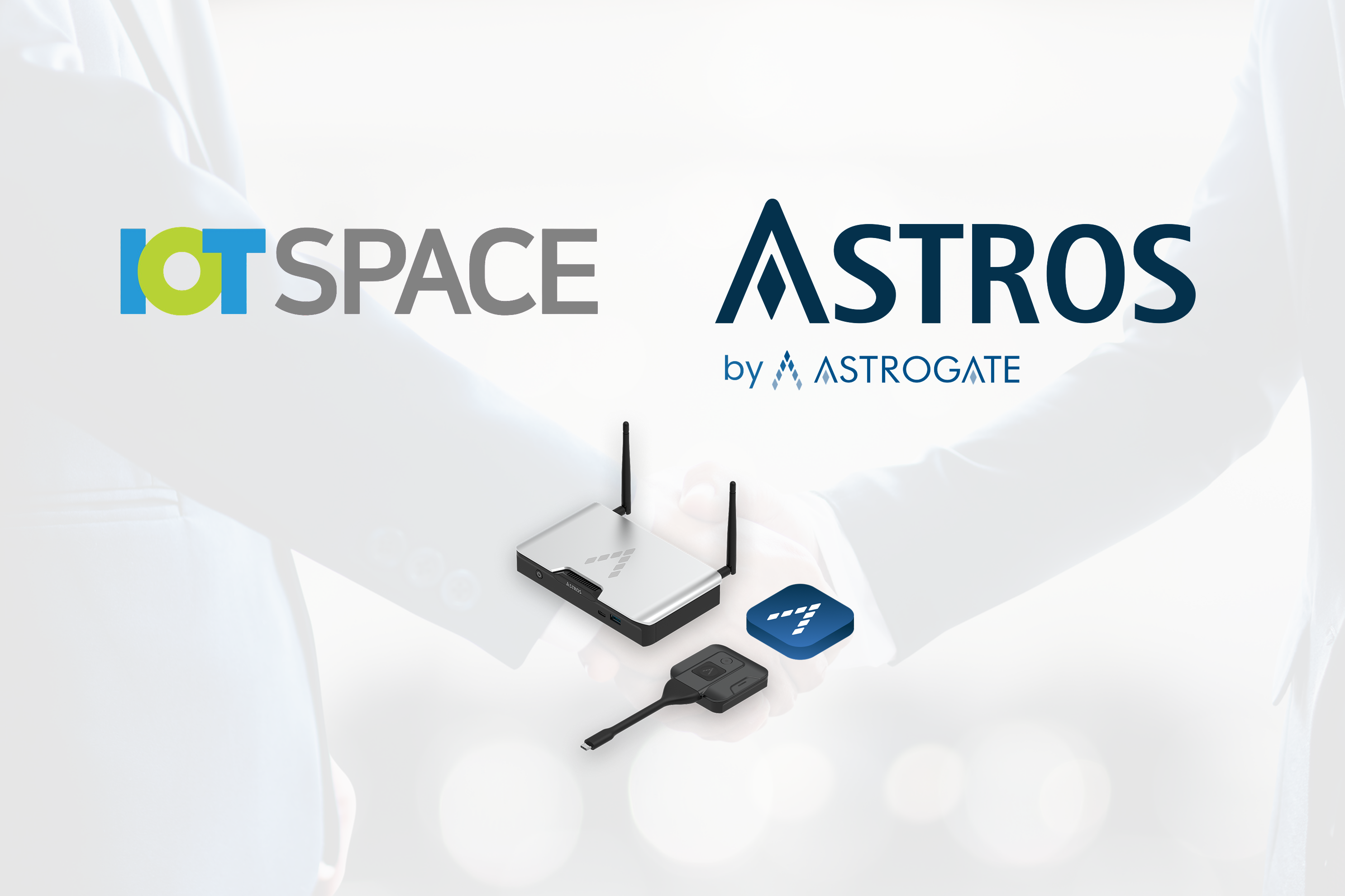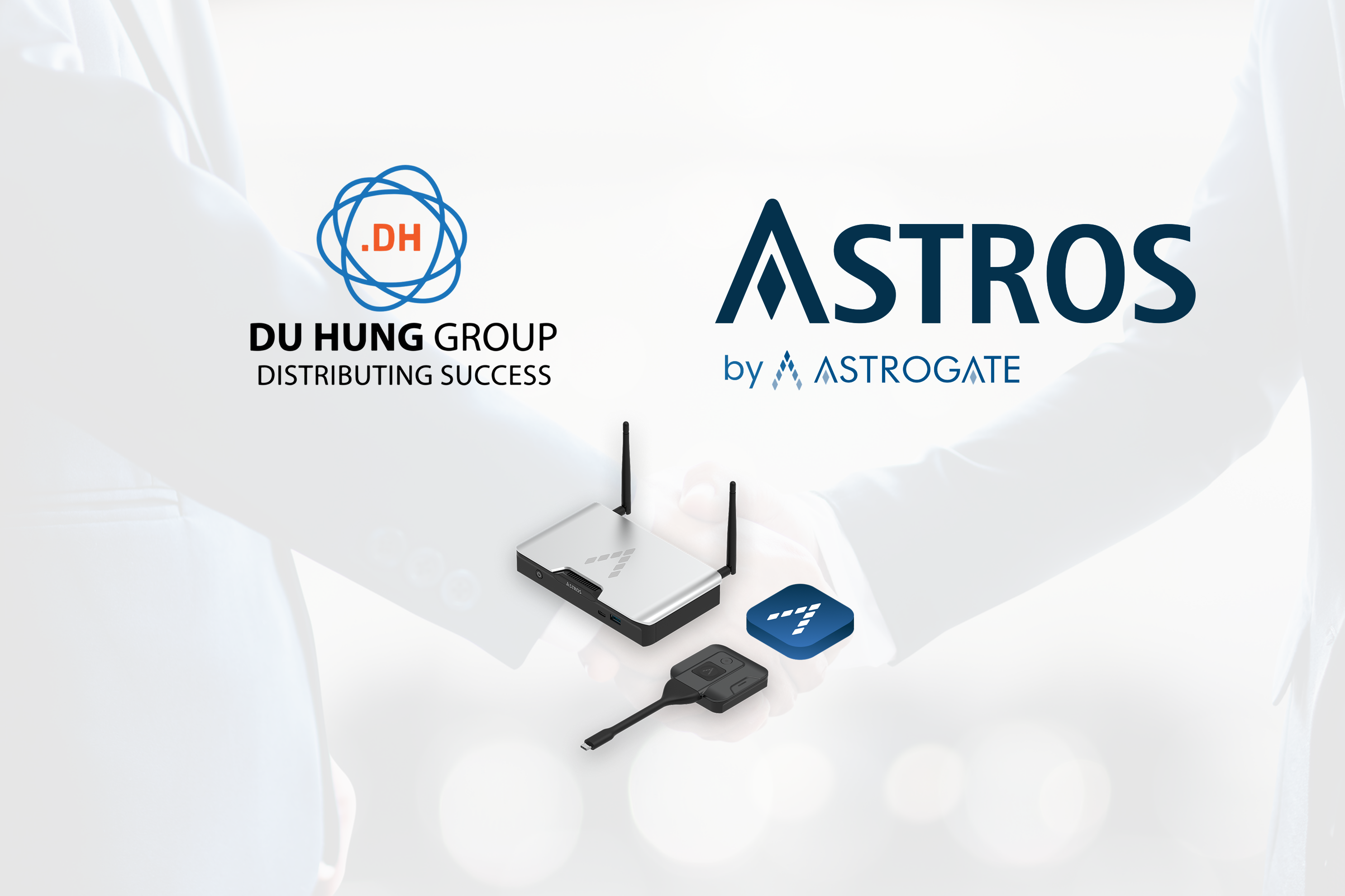Astrogate x Televic x Lumens: Collaboration & Integration for Smarter Meetings
Integrated Audio and Visual, Smarter Meetings Happen
2 min read
 Astrogate
8/22/24 5:34 PM
Astrogate
8/22/24 5:34 PM

As organizations embrace hybrid work models, ensuring seamless collaboration between in-office and remote participants has become a top priority. Many companies face challenges during video conferences, such as poor audio for remote participants or unclear visuals in the meeting room. Choosing the right conferencing solution can make all the difference.
This article compares two leading approaches—Room-Based Meeting (RBM) and Bring Your Own Meeting (BYOM)—to help decision-makers select the best fit for their teams.
RBM solutions are built around dedicated, in-room systems. The meeting software runs directly on specialized conferencing hardware—such as Microsoft Teams Rooms, Cisco Webex Room Kits, or Zoom Rooms devices—connected to displays, cameras, and microphones. Users simply schedule meetings and join from their calendars, while the room’s system manages audio and video automatically.
Seamless startup: Meetings launch instantly via an in-room control panel.
Optimized performance: Hardware and software are purpose-built to adapt to room acoustics and lighting.
Consistency: Every equipped meeting room delivers a similar experience.
Easy scheduling: Integration with calendars streamlines planning.
User-friendly: Participants don’t need to set up personal devices.
High upfront costs: Specialized hardware and installation are required.
Ongoing maintenance: Supporting multiple devices increases complexity.
Limited flexibility: Workflow depends on the conferencing platform installed (e.g., Teams-only environments).
Compatibility challenges: Joining external platforms like Zoom may require additional setup.
Restricted content sharing: Some RBM systems still rely on HDMI cables, slowing down collaboration.
RBM works best for large organizations that prioritize reliability and can invest in dedicated infrastructure.
BYOM empowers users to drive meetings from their own devices. Participants launch video calls from their laptops or mobile devices and wirelessly connect to the room’s display, camera, microphone, and speakers. Popular BYOM solutions include Astrogate ASTROS Conference, Barco ClickShare, and Mersive Solstice.
Lower costs: No dedicated conferencing system required.
Platform flexibility: Users can choose Teams, Zoom, Google Meet, or other platforms.
Personalized workflow: Meetings adapt to user preferences and devices.
Easy setup: Minimal training is required.
Adaptable to any space: Works in traditional rooms, huddle spaces, or open areas.
Reliance on personal devices: Meeting quality depends on each user’s hardware and internet connection.
Inconsistent experiences: Different devices and settings may affect audio and video performance.
Integration challenges: May not link seamlessly with room scheduling or automation systems.
BYOM is ideal for teams that value cost-effectiveness and flexibility, especially in small to mid-sized meeting spaces.
| Feature | Room-Based Meeting (RBM) Solution | Bring Your Own Meeting (BYOM) |
| Installation | Requires dedicated hardware | No dedicated hardware needed |
| Ease of Use | Auto-connects, consistent workflow | Users drive setup, flexible workflow |
| Audio/Video Quality | Optimized for room acoustics | Relies on personal devices and network |
| Cost | High upfront + maintenance | Lower upfront investment |
| Flexibility | Platform-specific, limited sharing | Cross-platform, adaptable |
ASTROS Conference is Astrogate’s BYOM solution, designed to simplify hybrid collaboration. With ASTROS:
Users can start a meeting on Teams, Zoom, Google Meet, or other platforms.
In-room participants connect wirelessly to cameras, microphones, and speakers—no cables required.
Remote participants enjoy a consistent, immersive experience.
By eliminating setup complexity and enabling platform flexibility, ASTROS Conference empowers teams to collaborate seamlessly across locations.

Integrated Audio and Visual, Smarter Meetings Happen

Astrogate is proud to announce an important milestone in our global expansion — the appointment of IOTSPACE as our new Regional Partner in Korea.

[Taipei, Taiwan – September 2025] – Astrogate Technology, a leading provider of wireless presentation and conferencing solutions, is proud to...